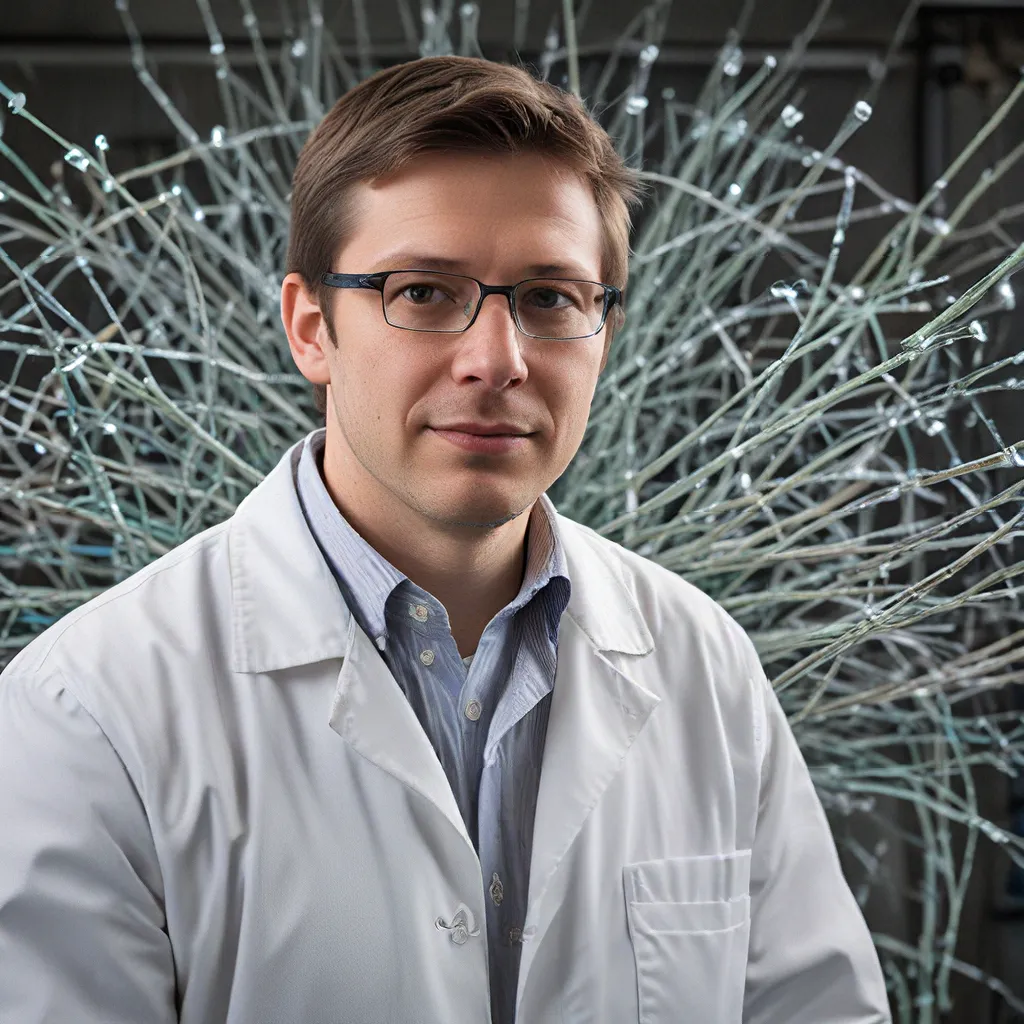
Charged and Ready: Tapping into the Power of Microbes
Imagine a world where the very building blocks of life—the humble bacteria—could be harnessed to power our devices and revolutionize the way we think about energy. Well, my fellow energy enthusiasts, that future is closer than you might think. Welcome to the captivating realm of bacterial nanowires, where a microscopic marvel is poised to transform the landscape of portable power.
As I delve into this fascinating topic, I can’t help but feel a surge of excitement. After all, the idea of tapping into the innate abilities of these tiny organisms is nothing short of awe-inspiring. It’s as if Mother Nature herself has bestowed upon us a hidden treasure, waiting to be uncovered and put to use.
Uncovering the Secrets of Shewanella oneidensis
At the heart of this energy revolution lies a remarkable bacterium known as Shewanella oneidensis. This unassuming little critter, found in a variety of aquatic environments, possesses a superpower that has captured the attention of scientists and engineers alike. You see, Shewanella oneidensis has the remarkable ability to generate electrically conductive nanowires, structures that can transport electrons over distances of up to several centimeters.
According to a study published in the Journal of Biological Chemistry, these nanowires are made up of a network of proteins that act as tiny electrical cables, allowing the bacterium to shuttle electrons from its interior to the outside world. It’s a remarkable feat of engineering, one that evolution has perfected over millions of years.
But here’s where it gets really interesting: Shewanella oneidensis doesn’t just produce these nanowires for the heck of it. No, it does so for a very specific purpose – to harness the power of chemical reactions and convert it into electrical energy. In a sense, these bacteria are nature’s own power plants, constantly generating a steady flow of electrons that can be captured and harnessed for our benefit.
Harnessing the Power of Bacterial Photosynthesis
Just as plants use photosynthesis to convert sunlight into chemical energy, these bacteria have evolved a similar process to generate electrical current. By leveraging a series of complex biochemical reactions, Shewanella oneidensis is able to extract electrons from the environment and transport them through its nanowires, effectively acting as a living, breathing battery.
Imagine the possibilities – a renewable, self-sustaining source of energy, powered by the very microbes that have been with us since the dawn of life on Earth. It’s a mind-bending concept, one that has captured the imagination of researchers and engineers around the world.
Powering the Future with Bacterial Batteries
As the scientific community delves deeper into the mysteries of bacterial nanowires, the potential applications for this technology are becoming increasingly clear. From powering small electronic devices to revolutionizing the way we think about renewable energy, these microscopic marvels are poised to play a pivotal role in shaping the future of sustainable power.
Just imagine a world where our smartphones, laptops, and even our homes are powered by the electricity generated by tiny bacteria. No more reliance on fossil fuels or bulky, inefficient batteries – just a steady, renewable flow of energy, courtesy of our microbial allies.
And the best part? This technology is not some distant, pie-in-the-sky dream. It’s already being actively researched and developed by scientists and engineers across the globe. In fact, several companies and research institutions are already exploring ways to harness the power of bacterial nanowires for a variety of real-world applications.
Reinventing the Portable Power Grid
One particularly exciting development is the concept of bacterial batteries – miniature power sources that use the electron-producing capabilities of microbes like Shewanella oneidensis to generate electricity. These innovative devices could revolutionize the way we power our portable electronics, offering a compact, sustainable alternative to traditional batteries.
Imagine a future where your smartphone or laptop is charged by a tiny bacterial battery, one that never needs to be replaced and can be recharged simply by exposing it to the right environmental conditions. The implications for the energy-saving products industry are truly staggering, as these bacterial batteries could not only reduce our reliance on finite resources but also drastically cut down on electronic waste.
A Symbiotic Relationship: Bacteria and Humans
But the potential of bacterial nanowires doesn’t stop there. Researchers are also exploring ways to integrate these microscopic marvels into larger-scale energy systems, such as microbial fuel cells and bioelectrochemical systems. These innovative technologies harness the power of bacteria to generate electricity from a variety of organic compounds, opening up new avenues for sustainable power generation.
Imagine a future where our wastewater treatment plants are equipped with microbial fuel cells, using the very bacteria that break down our waste to produce clean, renewable electricity. Or envision a world where remote villages in developing countries can tap into the power of local microbes to light their homes and power their essential devices. It’s a future that’s closer than you might think, thanks to the tireless efforts of researchers and engineers pushing the boundaries of what’s possible.
Powering the Plug & Save Energy Products Revolution
As an energy enthusiast, I can’t help but feel a sense of excitement and optimism when I think about the potential of bacterial nanowires. This technology truly represents a new frontier in the world of sustainable power, one that could have far-reaching implications for our society and the environment.
And that’s why I’m so passionate about the work being done by companies like Plug & Save Energy Products. By staying at the forefront of these advancements and incorporating them into their innovative energy-saving solutions, they’re helping to pave the way for a future where we can all enjoy the benefits of clean, renewable power.
So, my fellow energy pioneers, let’s embrace the power of these humble bacteria and let them lead us into a brighter, more sustainable tomorrow. Who knows what other wonders Mother Nature has in store for us?